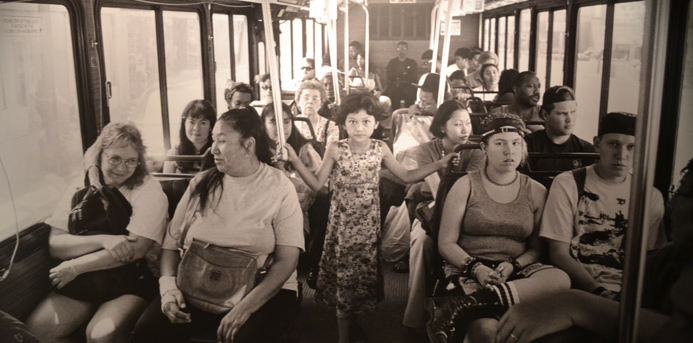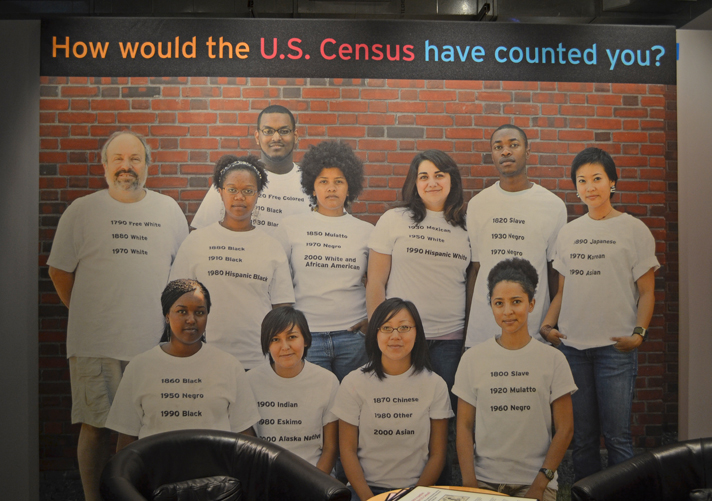#Icantbreathe. #Blacklivesmatter. #EricGarner. #Ferguson.
Whether you’re tweeting, Facebooking or watching CNN, CNBC, FOX News or Meet the Press, the conversation over the past several months across all news channels has focused on racial relations and racial inequalities in the United States.
There is an opportunity to participate in this national conversation right here in Skokie with the educational exhibit “RACE: Are We So Different?“.
“This show was planned years ago,” says Arielle Weininger, chief curator at the Illinois Holocaust Museum. “[Racism] is constantly a topic and it’s not changing fast enough.”
The YWCA Evanston/ North Shore partnered with the Illinois Holocaust Museum to present the interactive exhibit, which will remain open through January 25. The exhibit was developed through a collaboration of the American Anthropological Association and the Science Museum of Minnesota in 2011 and has been shown in museums all across the country since.
Being a part of the conversation is our job, says Eileen Hogan Heineman, director of racial justice at the YWCA Evanston/ North Shore. As a broader community we must figure out how to keep these conversations going until they lead to changes in the structures that are inequitable, she says.
While the exhibit is displayed inside the Illinois Holocaust Museum, the YWCA Evanston/ North Shore supplemented the exhibit with community programming including a scholar series of speakers.
In the past, Heineman says people have simply avoided talking about race and racism but just in the past year, she has seen a greater willingness to discuss it.
“I think people are starting to understand how race has played out in ways they didn’t understand before,” she says. Heineman thinks much of it has to do with the development of hand-held videos, which give people a look into neighborhoods different than their own.
Race is a social construct
The exhibit explains how humans invented race to create disparities between people in society.
Karen Singer, CEO at YWCA Evanston/North Shore, says wherever people are in their discussion on race, the YWCA looks at their role as taking people to the next place.
“We have to look systemically at how to change the pervasiveness of institutional racism in this country because that’s what we’re seeing over and over again,” Singer says.
The exhibit provides timelines filled with information from the 18th century to the present. The timelines cover events in government, science and society.
Heineman points out how historical events in society have affected racial stereotypes, even for our neighbors on the North Shore.
“You look at the statistics and people of color drown at much higher rates than white people and why is that? Well, it’s because there’s a history of those people not being swimmers because they weren’t allowed in the public pools or the public beaches.”
One of the YWCA’s recent initiatives is to teach all second graders in Evanston’s District 65 public schools how to swim.
“Race is not a biological concept. It never has been,” Kathy Slaughter, director of development at the YWCA/ Evanston North Shore, says.
“Differences that you see between people of different ethnicities or different backgrounds—those are merely the result of human variation,” Slaughter says. “In other words, people are different and people look different and it is mostly due to environmental reasons.”
Skin tone may be nothing more than a result of ancestors’ adaptation to the sun, according to anthropological studies in the “Human Variation” section of the exhibit.
The most powerful message may be right in title: that we need to focus on our similarities rather than our differences.
“Instead of saying this set of people aren’t good for my neighborhood, say this set of people want exactly what I want in a neighborhood, so how can we work together to make those things happen,” Heineman says.
Starting—or continuing—the discussion
As the YWCA’s director of racial justice, Heineman is responsible for facilitating racial equity trainings, encouraging discussion on race with her clients and running programs for school children.
Heineman says that race is a difficult issue for some people to discuss because it can be uncomfortable.
“There is power and privilege attached to certain races—the white race to be specific—and it’s not attached to other races,” she says. “Some people have a sense of guilt or feel like they will be blamed for things because there have been economic and social advantages of being one race rather than another, so it’s very uncomfortable.”
However, Heineman has suggestions for people who feel hesitant or unsure of how to engage in the conversation:
- Look for opportunities in the community where you can join a discussion.
- Consider events at local public libraries, YWCA’s / YMCA’s, public schools and even theater performances with post-performance discussions.
- Engage and be open.
- “When we let go of some of our preconceived notions it is much easier to listen. Allow yourself to hear other people’s stories and to be moved by those stories—moved to action.”
- “Look for an article or a book to read.”
- “Nobody’s an expert. We’re each an expert on our own stories. No one’s an expert on the whole big picture.”
You can visit the exhibit through January 25 at The Illinois Holocaust Museum, 9603 Woods Drive in Skokie, Illinois.


